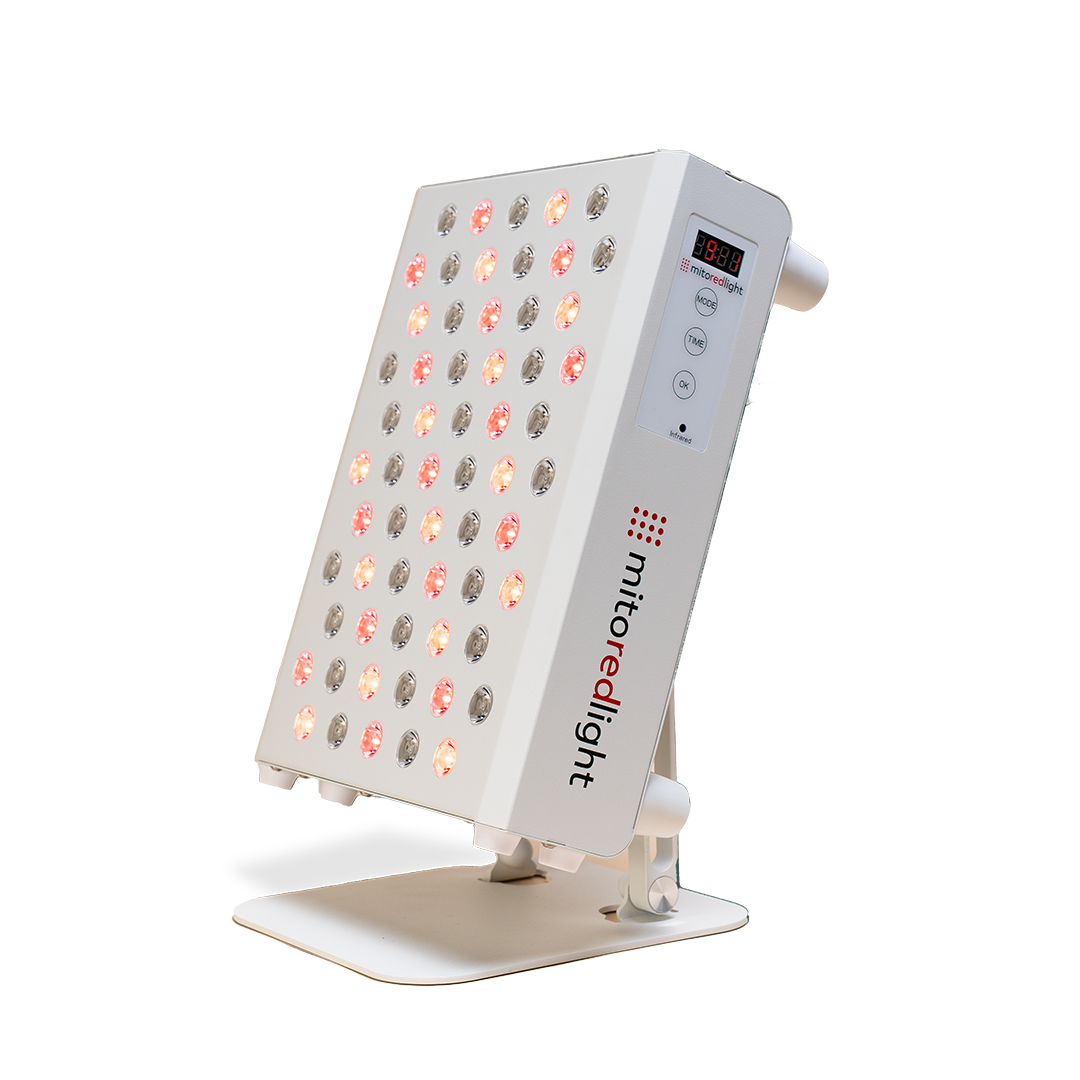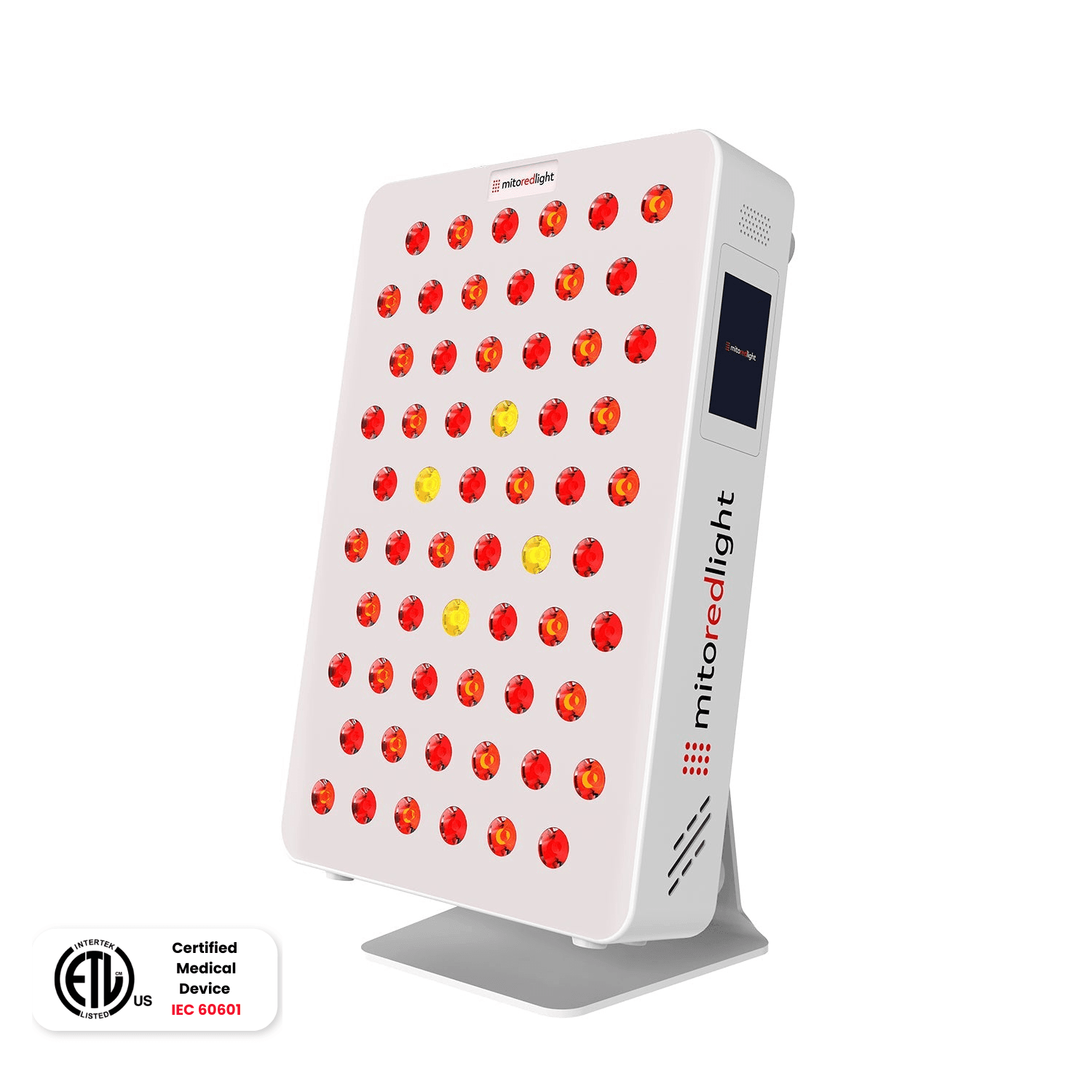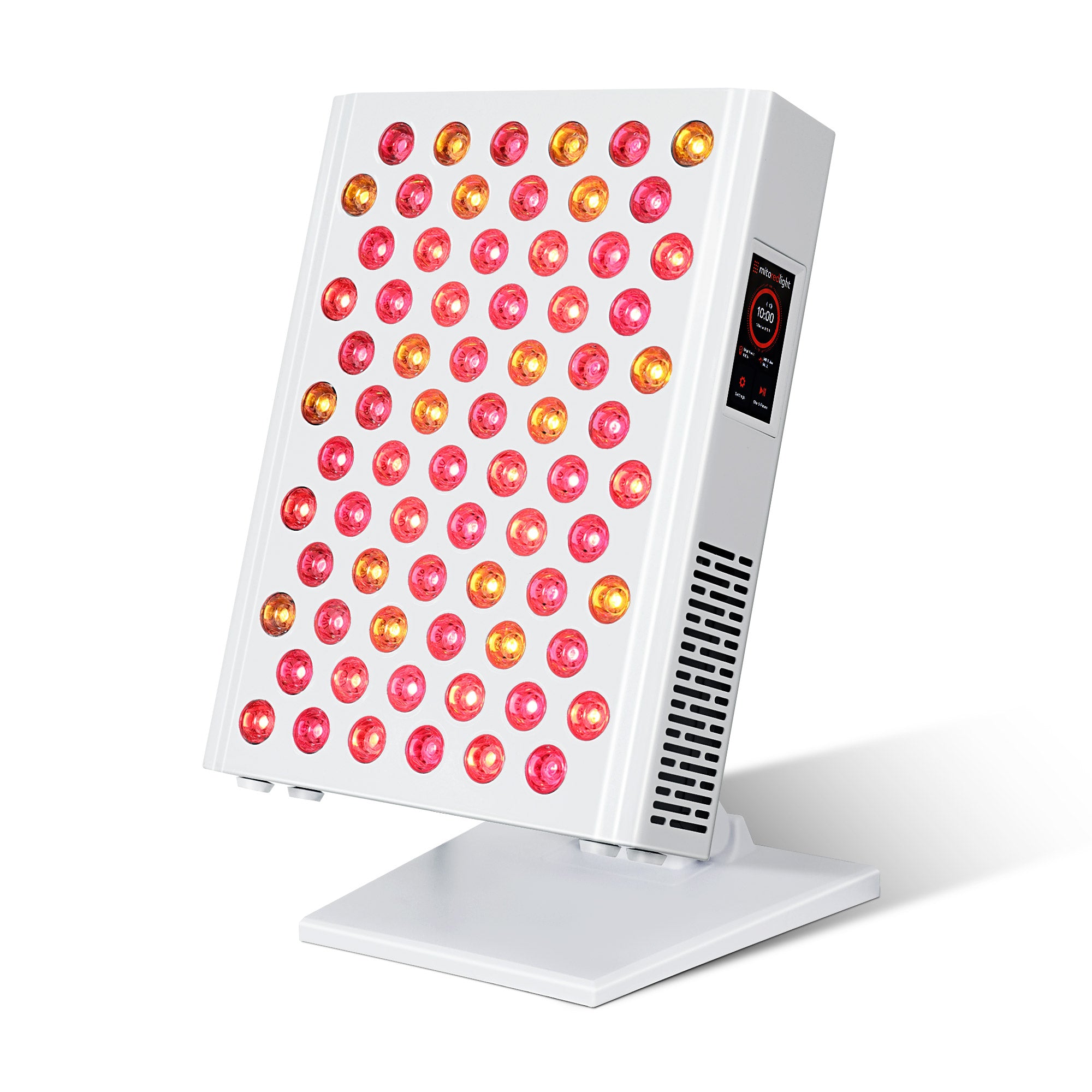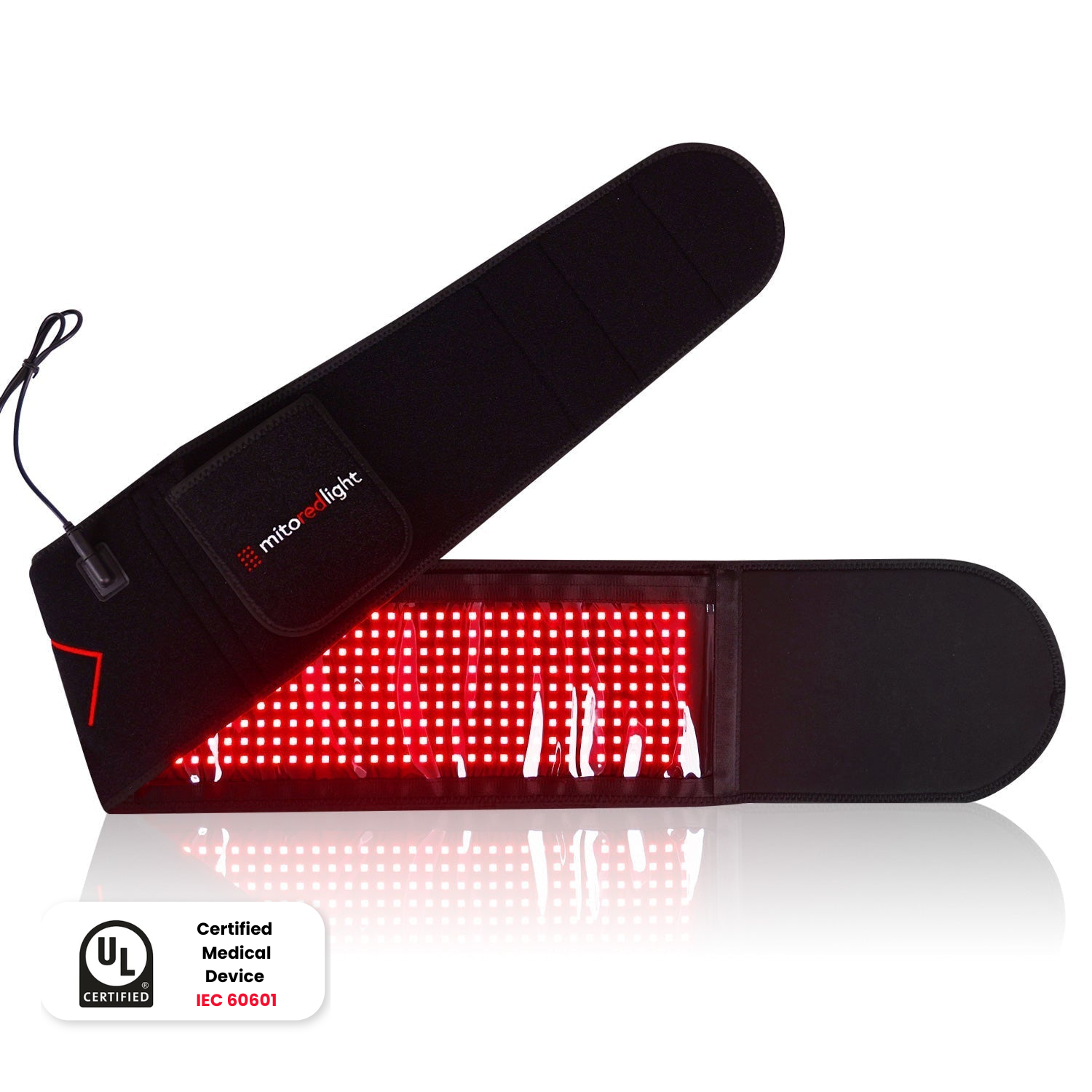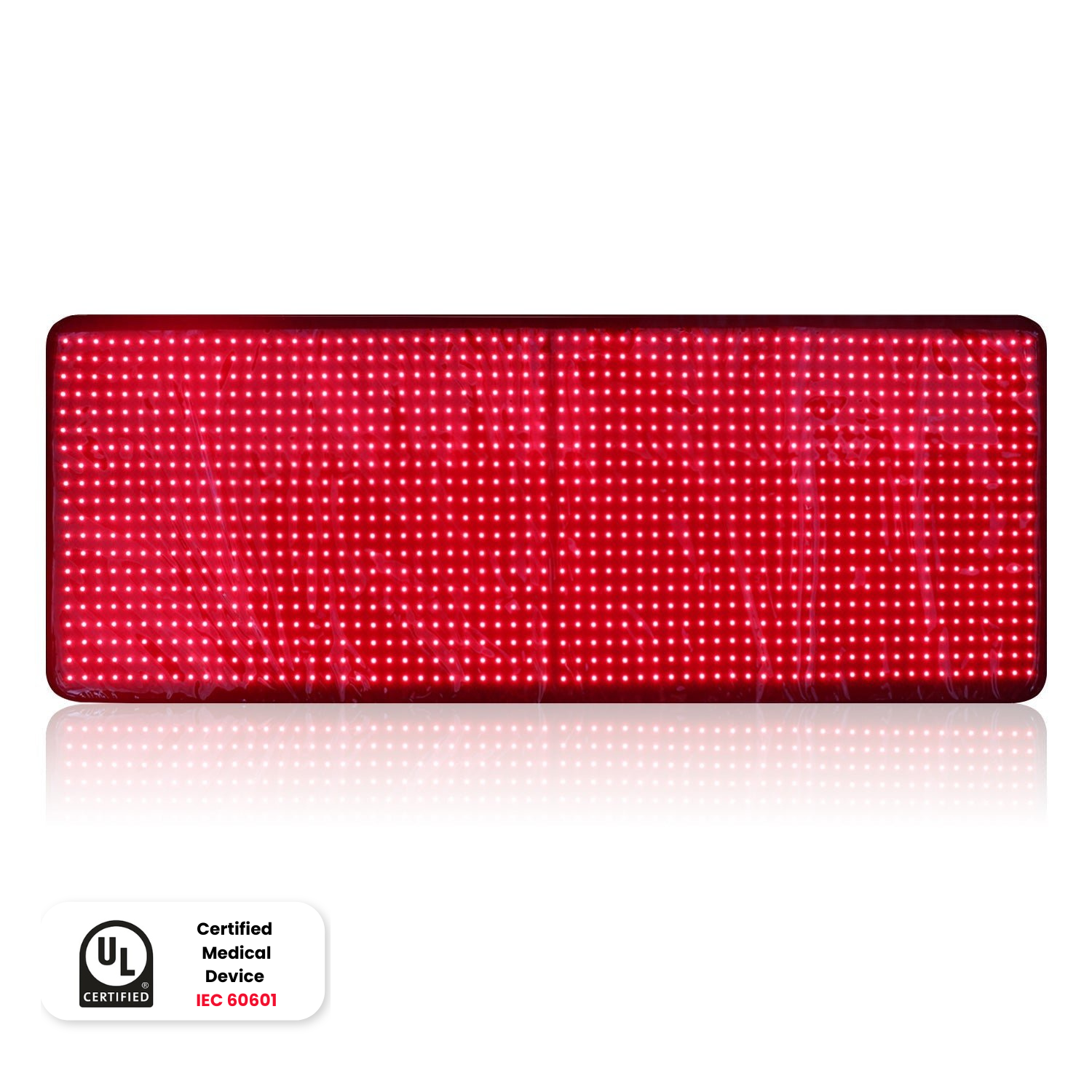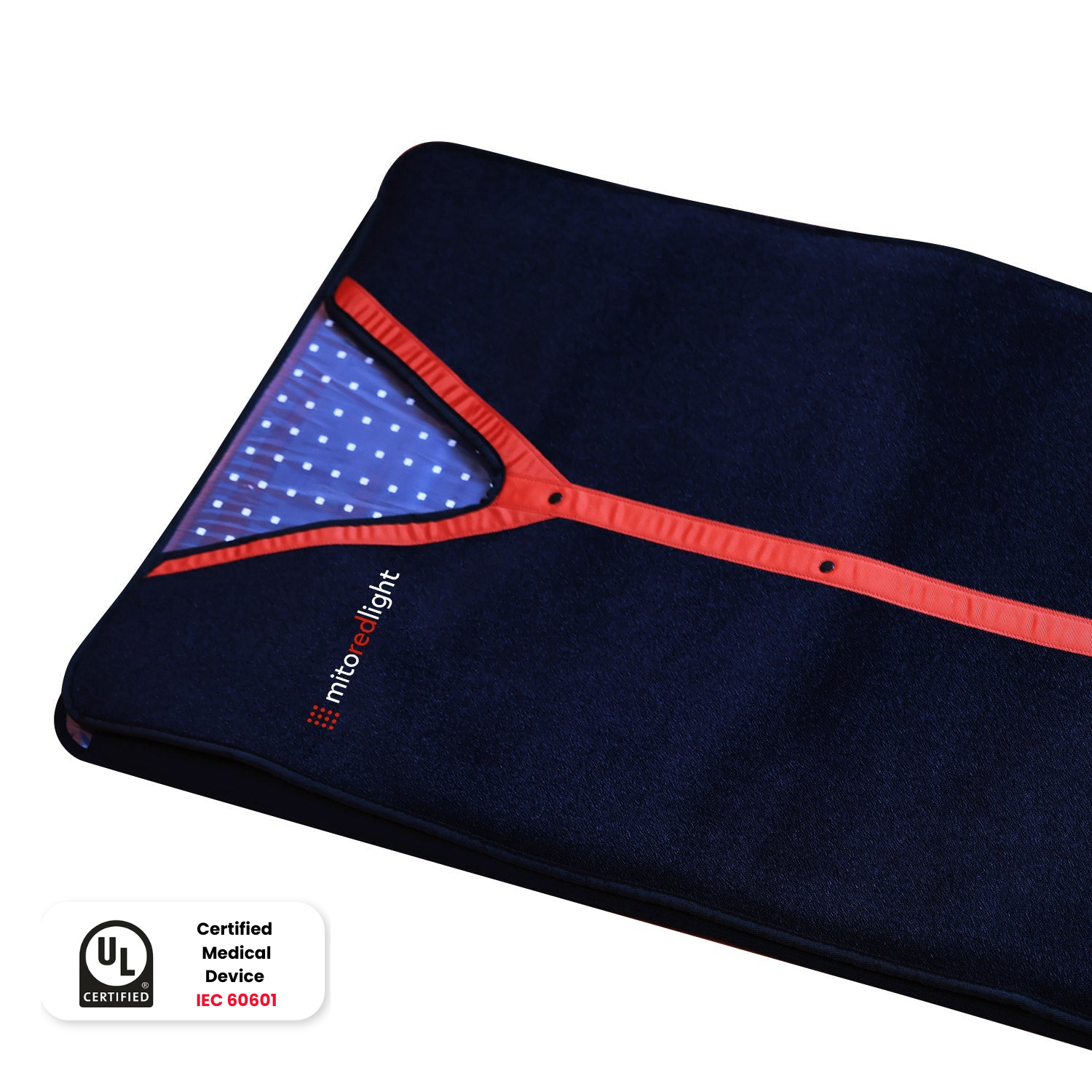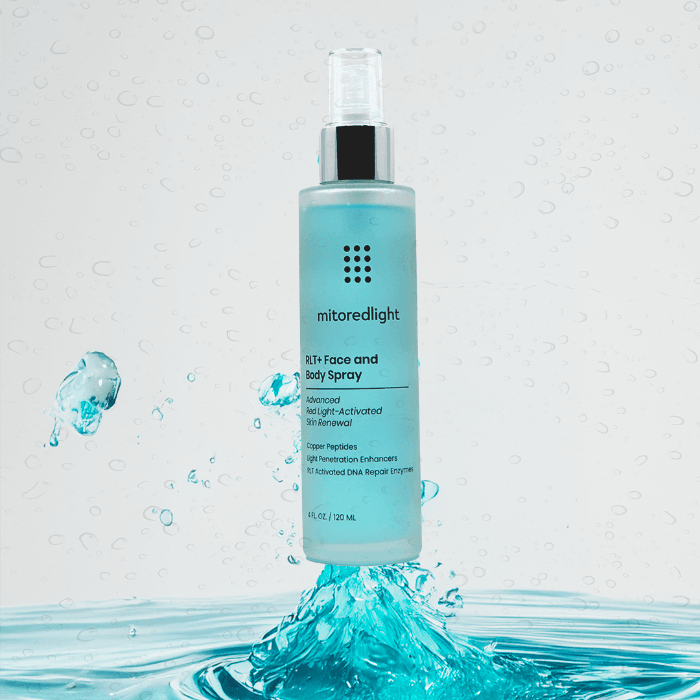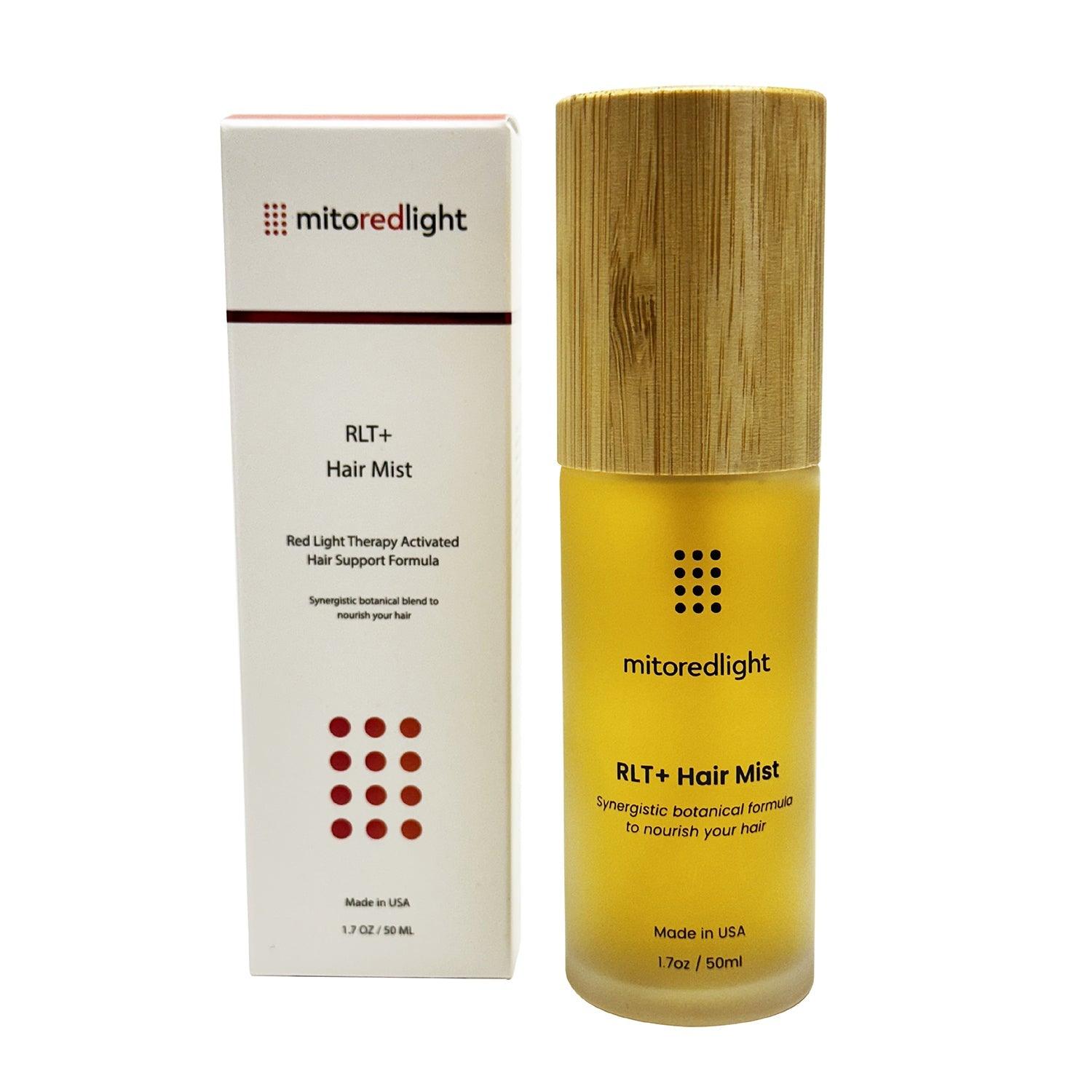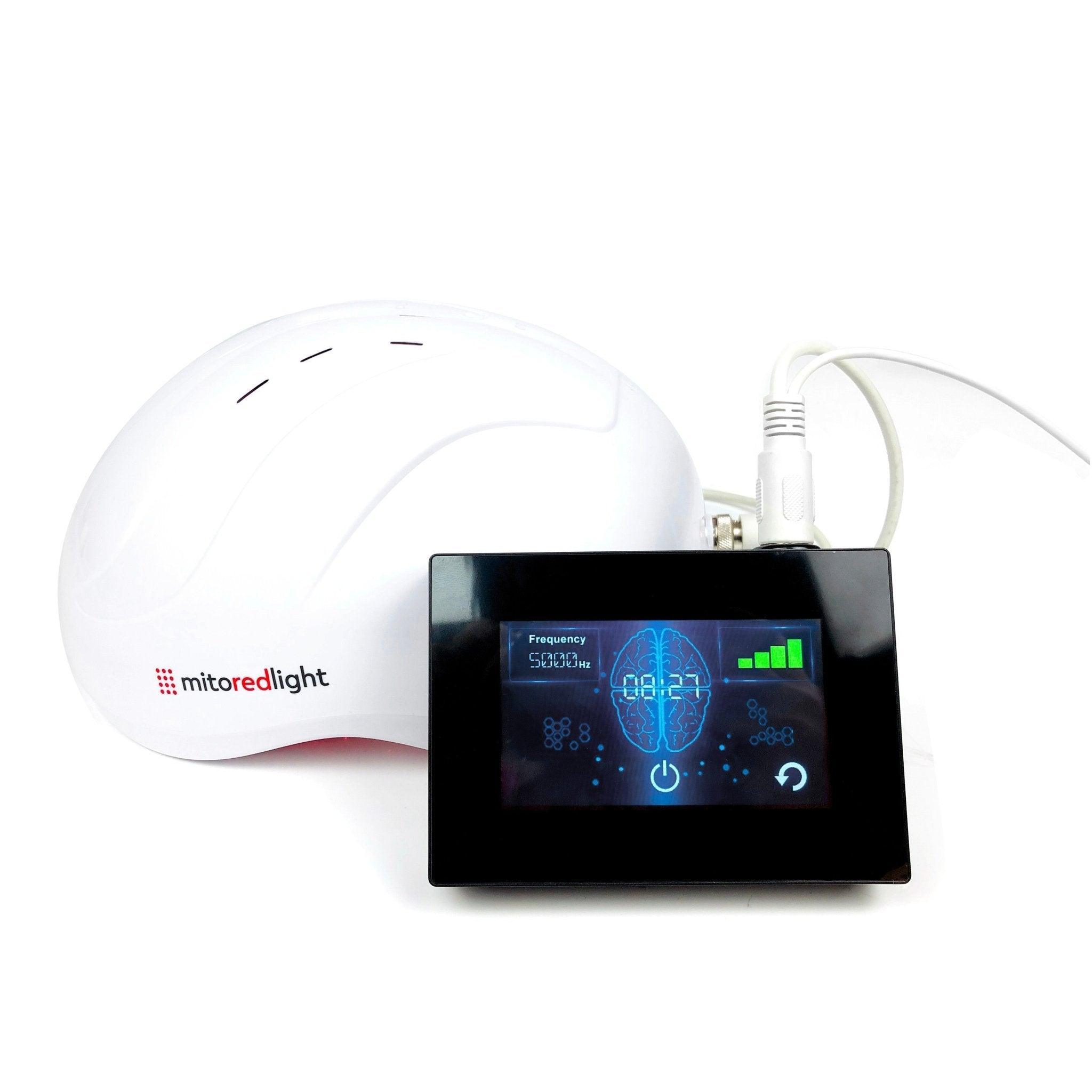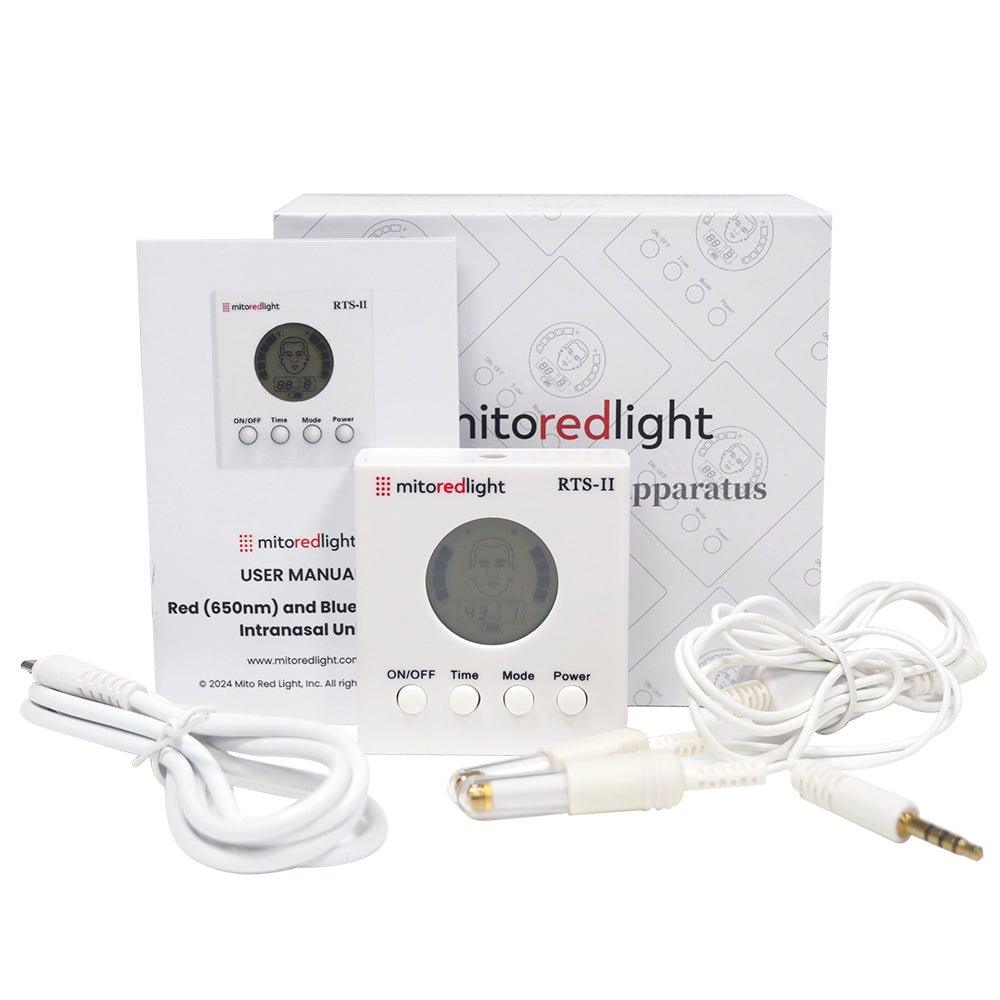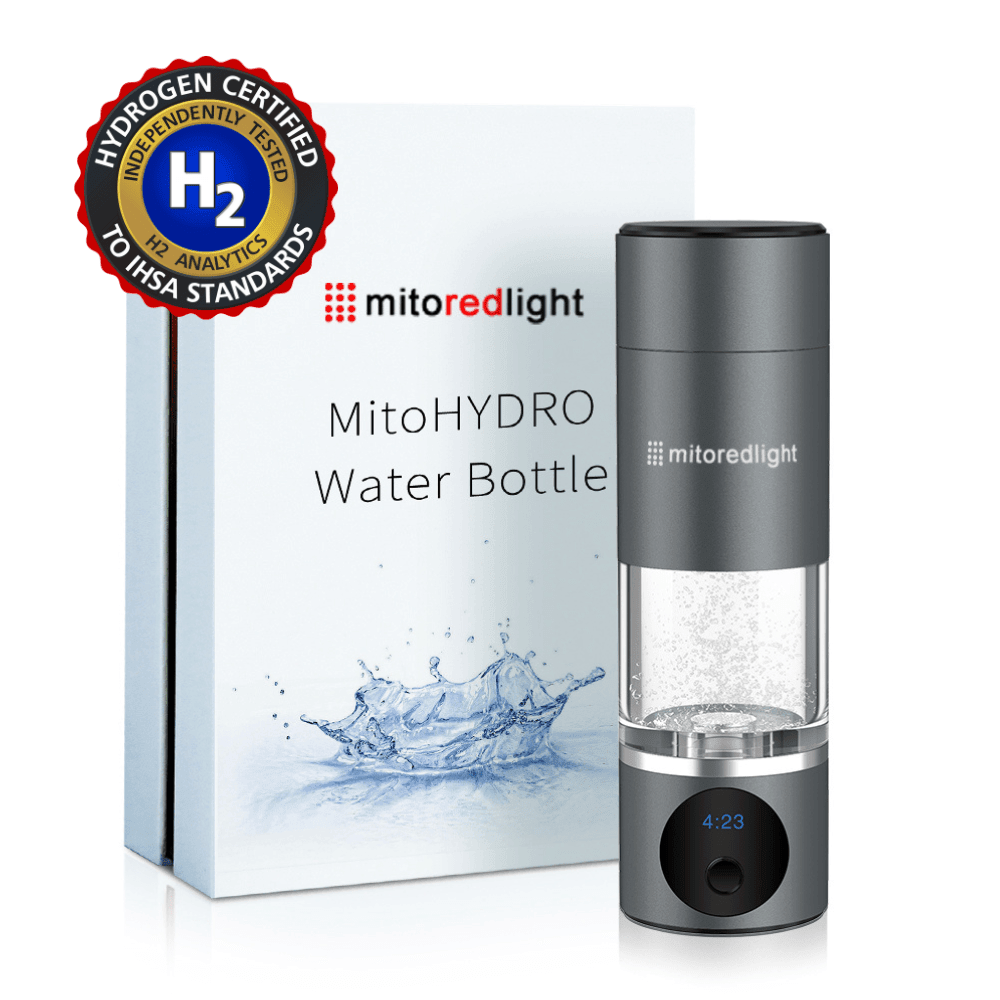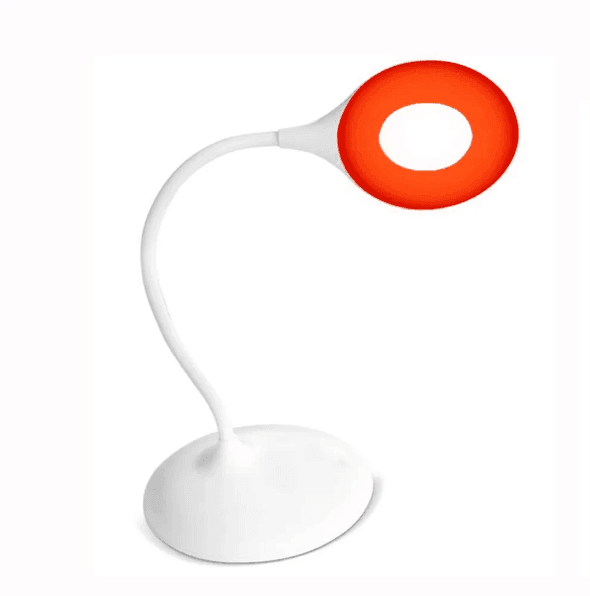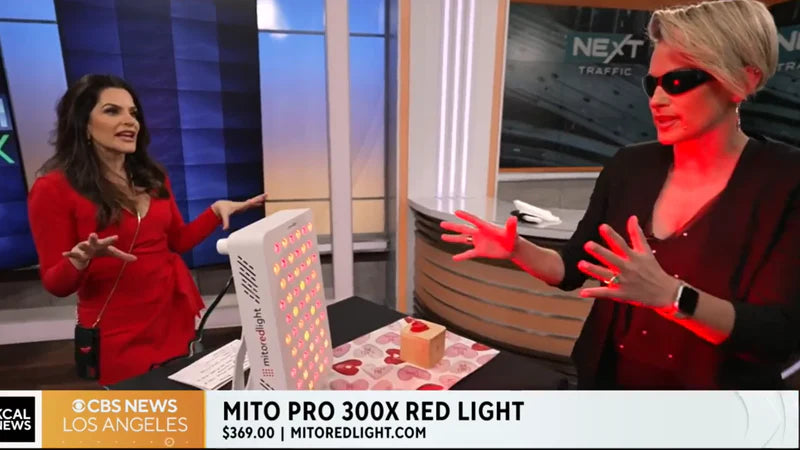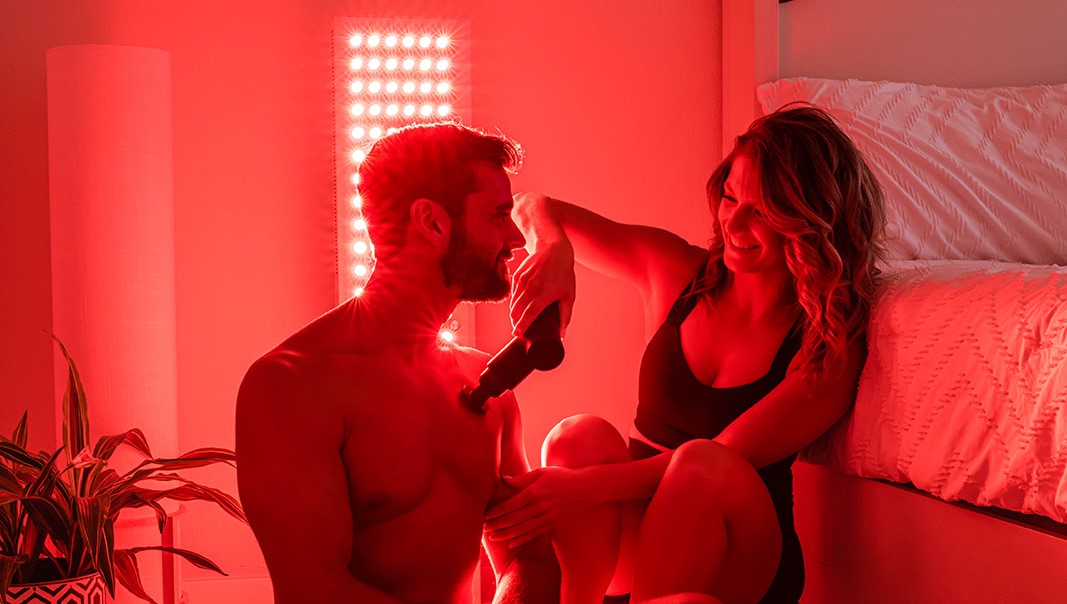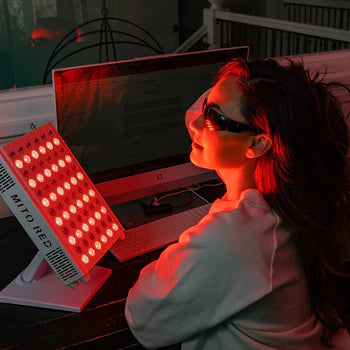DISCLAIMER: Mito Red Light devices are Class II wellness devices aimed at affecting the body through topical heating and supporting cellular function. The information provided in this article and on this site is for educational purposes only and is not intended to imply effectiveness of Mito Red Light devices for any specific application. The information provided in this article and on this site is not intended to diagnose, treat, cure, or prevent any disease, is not a substitute for consultation with a licensed medical provider and should not be construed as medical advice. Click here to read our article on potential contraindications of red light therapy..
Table of Contents
- How Red Light Therapy Works
- Common Uses of Red Light Therapy
- Pain
- Hair Growth
- Skin Quality
- Skin Coloration
- Wound Healing
- Sleep Quality
- Workout Recovery
- Emerging Uses of Red Light Therapy
- Eye Health
- Cognitive function
- Mito Red Light
Red light therapy is a newer form of therapy that only began getting recognition around 1990 when the National Aeronautics and Space Administration (NASA) researchers discovered that red wavelengths of light shortened healing times for wounds. This discovery sparked an interest in how red light wavelengths actually worked to cause this effect and what other potential applications there were for red light-based therapies.
Today, red light therapy research has developed significantly, and there are many other applications that it is used for beyond just wound healing support. Red light therapy is used for pain management to stimulate hair growth, improve post-workout recovery, and many other purposes. While red light therapy research has come a long way in the three short decades it has been researched; there are still new potential applications for red light therapy that continue to emerge.
How Red Light Therapy Works
People who are learning about red light therapy sometimes think that it sounds too good to be true. The idea of simply shining a light on an area of your body and having that cause a beneficial effect could sound a bit farfetched. However, there are well-proven medical examples of specific wavelengths of light causing physiological effects and a scientifically-supported explanation of how red light therapy works.
Examples of specific wavelengths of light having a significant effect on the body have been around for centuries. The best-known examples of light affecting the body are related to ultraviolet (UV) light. More specifically, UVB light affects the body in visible ways, stimulating the production of melanin and providing a “tan” after being in sunlight or artificial UV lighting. UVB light also affects the body in less obvious ways, playing a vital role in stimulating the production of vitamin D, a critical factor in bone and immune health. UV light therapy is even used as a hospital treatment for some infants, helping their bodies break down certain toxic chemicals.
While UV light primarily acts on skin cells, red wavelengths of light can penetrate much deeper, affecting tissues deep within the body. The wavelengths that are specific to red light are thought to stimulate mitochondria — tiny organs within each cell that are responsible for producing energy and regulating cell production. Mitochondria also play an important role in controlling inflammation.
Common Uses of Red Light Therapy
The benefits of red light therapy and research into potential red light therapy applications is ongoing; however there are some applications of red light therapy that have already been researched and that people are already routinely using it for.
Pain

Red light therapy is often used to help manage pain, especially chronic pain or pain caused by inflammation. The types of pain that red light therapy is used for can vary widely but commonly include:
- Arthritis
- Chronic back pain
- Neck pain
- Muscle strain pain
- Wound pain
- Carpal tunnel pain
- Bursitis
The majority of the types of pain that red light therapy is used to treat are related to muscles and joints, as the tissues that cause this type of pain are often able to be reached using red light. Red light therapy is not typically recommended as a stand-alone pain management tool but can be used to augment existing pain management techniques.
Hair Growth
One potential benefit of red light therapy can be the promotion of hair growth. One study using red light treatment to stimulate hair growth showed a 39% hair increase in individuals who used red light compared to a placebo group. Many people who are experiencing hair loss or thinning will use red light therapy to slow hair loss and to promote hair growth.
Skin Quality
An increasingly popular use of red light therapy is to produce improved skin quality. Research suggests that red light therapy actually rejuvenates the skin, improving how the skin repairs itself and stimulating the production of collagen.
Collagen is an important protein within the skin that gives it its elasticity, making it more supple. As we age, natural collagen production falls, causing the skin to lose its elasticity and develop wrinkles. Not only does stimulating collagen production improve your overall skin health, but it also reduces the effects of aging on the skin, helping your skin to look younger for longer. Stimulating collagen production could even help to reduce existing wrinkles and make your skin smoother.
For a more detailed discussion of red light therapy and skin health, see our articles HERE, HERE, HERE, and HERE.
Skin Coloration
In addition to promoting the improvement of skin quality, research also suggests that red light therapy can help to maintain a more even skin tone. There are two different ways that this can occur. One is by down-regulating hyperpigmentation, meaning the production of excessive amounts of skin pigmentation in areas is suppressed, helping these areas not to stand out as dark spots.
The second way that red light therapy may improve skin coloration is by providing extra protection against the effects of the sun. The ultraviolet light in sunlight can cause areas of hyperpigmentation to develop, creating dark areas of skin that are sometimes referred to as “age spots” or "liver spots." Added protection against the sun can help to prevent uneven skin tone from developing and cause existing uneven skin tones to become more uniform.
Wound Healing
One of the earliest discovered uses of red light therapy is the potential that it offers to improve wound healing. During the early 1990s NASA scientists were experimenting with using red light to improve how well plants grew. One unexpected finding was that the scientists involved in the experiments who were often exposed to the red light found that their wounds healed significantly faster than they expected.
Building on this discovery, red light therapy was tested specifically for wound healing during a series of experiments that even included using red light therapy for US Navy SEAL team members. Research continues to show that red light therapy improves wound healing, and it is used both to improve the speed at which wounds heal and how quickly and effectively scars resolve.
Sleep Quality

One more recently discovered use of red light therapy is the potential to improve the quality of sleep. In 2012, athletes using red light therapy were shown to have improved sleep quality after using the treatment. This spurred new research in the use of red light therapy for sleep, with much of this research showing that there was a sleep benefit. The sleep benefits of red light therapy are difficult to quantify, as the benefit derived from sleep is subjective, but early findings indicate that there is a benefit to using red light therapy to improve sleep.
Workout Recovery

One growing application of red light therapy has been in enhancing workout recovery. Red light therapy has been shown to provide many benefits that improve workout recovery, including:
- Delaying the onset of muscle soreness
- Reducing blood markers connected with muscle damage from exercise
- Speeding muscle recovery after a workout
- Improving the maximal exercise tolerance during exercise.
Red light therapy is used for workout recovery by top athletes but is becoming more commonly used by everyday people wanting to improve the benefits they see from their workout routines.
By promoting workout recovery and optimizing the outcomes of a workout, people can see many benefits. Improving muscle performance and well-being during a workout will improve how productive a workout actually is, making the same effort more beneficial. Improving workout recovery can also shorten the time between workouts and reduce the risk of workout-related injuries.
Emerging Uses of Red Light Therapy
While there are many well-established uses for red light therapy, there are also some more recently discovered potential applications. These emerging uses of red light therapy are still being researched, and the newness of research in these areas makes them promising but also indicates that further research is likely necessary before these applications become mainstream.
Eye Health
While red light therapy is thought to be safe for your eyes, this has not been conclusively proven, and red light therapy providers still recommend wearing eye protection to be cautious. This approach, however, may be changing. The American Academy of Ophthalmology has reported that some research suggests that red light used in the eyes provides benefits to vision. As recently as November 2021, research has suggested that short periods of red light exposure to the eyes improve visual acuity. While more research is needed, there are indications that red light therapy may improve eye health. For a more detailed discussion of RLT and the eyes, please see our article HERE.
Cognitive function
The impact of red light therapy on the brain and cognitive function is a recent area of interest. This is a more complex topic, as red light does not typically penetrate the skull, and delivering red light to the brain is not as straightforward as delivering to muscles or joints.
There is, however, research suggesting that red light is able to increase blood flow to the brain and stimulate mitochondria in brain cells. Another important study showed that red light can create measurable improvements in patients who have experienced a traumatic brain injury. The implications of this research are exciting, but further research is needed to find out how red light impacts brain health and how to best deliver red light therapy to brain tissues.
Mito Red Light’s Approach
At Mito Red Light, we combine red and NIR light in our panels in different ways. We provide combinations tailored for specific purposes, but we also offer panels that let you choose how you would like to balance different light types. This provides you with greater control over your sessions, empowering you to plan your approach the way you want.
Not all red light therapy panels are created equal. For red light therapy to be worth the investment, you need a high-quality, independently tested, professional red light therapy device from a reputable company. With over 5 years in business and over 65,000 ecstatic customers, Mito Red Light is a brand you can trust. Our nearly 2,000 reviews speak for themselves. You can also click to review some of our customers' red light therapy before and after examples.
We are confident that our devices are the highest quality and best value at home red light therapy devices available anywhere. We welcome you to review our selection of red light therapy devices or to contact one of our representatives at 1-866-861-6486 to learn more or to help find the right solution for you.
